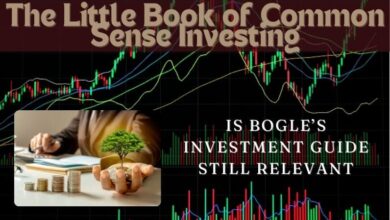Invest In Starbucks Now? – Not A Chance

Starbucks’ (SBUX) investors have been rewarded with an annual rate of return in the upper teens if shares were acquired at the end of August 1995 and never sold. It is a very different story if shares were acquired at the end of August
- 2005 – annual rate of return drops to the low teens.
- 2015 – annual rate of return drops to the high single digits.
- 2020 – annual rate of return drops to the low single digits.
- 2023 – annual rate of return is a negative low single digits.
These returns are AFTER, in an act of desperation, SBUX’s August 13, 2024 announcement of the appointment of a new Chairman and CEO effective September 9; SBUX’s share price surged ~$20 with investors thinking SBUX had found its Savior.
Before I go any further, please keep in mind that SBUX has had five CEOs, with founder Howard Schultz taking the reins three times, since going public in 1992! It doesn’t instill a lot of confidence when the top of the pyramid (former-CEO Laxman Narasimhan) lasted only 17 months.
The new Chairman and CEO’s compensation package includes an annual salary of $1.6 million, the opportunity to earn up to $23 million worth of share-based bonuses each year, as well as a cash bonus worth nearly $3.6 million depending on the company’s performance. The contract, if paid out in full, is ~$113.2 million.
Oh! And that’s not all.
This individual does not need to relocate. He will have a ‘small remote office’ at his home in Newport Beach, California, and will not be required to permanently relocate to SBUX’s Seattle offices more than 1,000 miles away. How is he going to commute from California to Seattle you wonder? Fear not. SBUX is giving him a corporate jet to use to commute back and forth.
SBUX’s new Chairman and CEO may have been successful at Chipotle (CMG) but even if he does not experience the same success at SBUX, he should still make out just fine financially.
I like to invest in companies where the majority shareholders and Board members’ interests align with mine. In my opinion, this compensation package does not align with that of retail investors.
I suspect SBUX has insisted that its Head Office rank and file employees return to the office several days a week…none of this work from home 100% of the time. I don’t know anyone who works at SBUX’s Head Office but I suspect the new CEO’s work arrangements have ruffled a few feathers.
Even if SBUX’s Head Office employees have no qualms about the new CEO’s work from home arrangements, you can bet your bottom dollar that the store employees who are looking to unionize have an opinion about this arrangement and compensation package. I think it will be really difficult for SBUX management to push back on the rank and file employees’ wage increase demands when they bring on a new CEO who could earn ~$113.2 million over the term of his contract.
Now, let’s talk about SBUX’s coffee and food products.
Prior to retirement I would go to a SBUX store on the very rare occasion not by choice but because a coworker insisted on going there. I never liked their coffee and found myself having to add extra sugar and cream just to make the coffee tolerable.
In a segment of the late great comedian John Pinette’s stand up routine, he talks about having to go to Dunkin Donuts to get a coffee so he can drink coffee while standing in line to get a SBUX coffee. How times have changed! Before retirement (pre-COVID) I remember lines at various SBUX locations. Some of those SBUX locations are now closed and those that still exist do not have the same long line ups.
Following my retirement in 2016, I have not purchased anything from SBUX. I can’t imagine I am the only consumer who has wondered how this company can charge so much for their products.
This is a company that charges a fortune for consumable products many people can ill afford. Who in their right mind spends $8.20 on one customized grande latte? The stuff doesn’t even stay in you for long.
God knows. I try. I really, really try to keep an open mind before analyzing a company. Within minutes of analyzing SBUX, however, I concluded I would have to be a fool to invest in this company. In the universe of companies in which to invest, what would remotely possess me to invest in it (new CEO or not)?
Affiliate
The Sure Dividend Newsletter for high-quality dividend growth stocks.
- The monthly newsletter includes stock analyses, portfolio ideas, dividend risk scores, real money portfolio, etc.
- Risk free 7-day free trial and $41 off only through Dividend Power for $158 per year.
- Sure Dividend Coupon Code – DP41S
Click here to try the Sure Dividend Newsletter (7-day free trial).
Business Overview
SBUX, formed in 1985, describes itself as the premier roaster, marketer and retailer of specialty coffee in the world with operations in 86 markets.
It purchases and roasts what the company considers to be high-quality coffees that it sells, along with handcrafted coffee, tea and other beverages and a variety of food items through company-operated stores. It also sells a variety of coffee and tea products and licenses its trademarks through other channels, such as licensed stores as well as grocery and foodservice through its Global Coffee Alliance with Nestlé S.A..
The following reflects SBUX’s store data at the end of Q3 2023 and Q3 2024.

SBUX leases a sizable percentage of its company-owned stores locations. It is not, therefore surprising the operating lease liabilities (CPLTD and long-term) are in excess of $9.7B.

The company’s website is a good source of information if you want a very high level overview of the company. Part 1 in the FY2023 Form 10-K provides a more comprehensive overview of the business and risk factors. The Q3 2024 Form 10-Q is also a great source of information.
Financial Review
Q3 and YTD2024 Results
SBUX’s Q3 and YTD2024 results are accessible here.
We see that SBUX has substantial debt at FYE2023 and the end of Q3 2024 (June 30, 2024). Comparing many Form 10-Qs and Form 10-Ks of other companies to that of SBUX, it is readily apparent that SBUX has less attractive financing arrangements than higher quality companies. Fortunately, the maturity schedule is such that SBUX must repay (or renegotiate) a manageable amount of its debt over each of the next several years.

On a positive note, SBUX has ‘Stored value card liability and current portion of deferred revenue’ totaling $1.831B and $6.011B of long-term Deferred Revenue. This is essentially ‘free’ money SBUX can use to reduce its borrowing requirements.
Operating Cash Flow (OCF), CAPEX, and Free Cash Flow (FCF)
In the FY2014 – FY2023 time frame, SBUX’s:
- OCF was (in B$) 0.61, 3.75, 4.58, 4.17, 11.94, 5.05, 1.60, 5.99, 4.40, and 6.01. YTD2024 OCF is $4.56B.
- CAPEX was (in B$) 1.16, 1.30, 1.44, 1.52, 1.98, 1.81, 1.48, 1.47, 1.84, and 2.33. YTD2024 CAPEX is $1.979B.
- FCF was (in B$) 1.66, 2.17, 2.78, 2.57, 3.05, 1.59, 2.79, 5.02, 4.69, and 4.81. YTD2024 OCF is $2.581B.
FY2024 Outlook
At the beginning of FY2024, SBUX provided the following guidance.

The FY2024 guidance was subsequently updated on January 30, 2024 as follows.

On July 30, 2024, SBUX once again made various adjustments to its FY2024 guidance.

The most recent guidance is VERY different (and not in a good way) from what was communicated at the outset of FY2024!
Risk Assessment
Every investment should be assessed from a risk/reward perspective. Far too often, however, investors neglect the risk aspect of an investment. This can often lead to heartbreak.
The following ratings are found in the Frequently Asked Questions segment of the company’s website.

All 3 long-term ratings are the top tier of the lower medium grade category of credit ratings. They define SBUX as having an adequate capacity to meet its financial commitments. Adverse economic conditions or changing circumstances, however, are more likely to lead to a weakened capacity to meet its financial commitments.
Now, hang on for a moment.
Between mid-September 2015 and mid-November 2017, Moody’s assigned a long-term rating of A2. In mid- September 2017, the rating was downgraded to A3. The rating was once again downgraded to the current Baa1 level in mid-June 2018.
In mid-December 2016, S&P Global upgraded SBUX’s senior unsecured debt from A- to A. In early November 2017, however, the rating was lowered to A-. The rating was once again lowered to the current Baa1 in mid-June 2018.
I don’t know why SBUX still reflects a Fitch rating on its website because Fitch’s website shows that it withdrew all SBUX ratings on October 10, 2022. Perhaps I am missing something. A Fitch rating or not…it doesn’t matter. I still don’t like SBUX.
I fully appreciate that credit rating companies don’t always ‘get it right’. Nevertheless, I still look at how they rate a company’s domestic senior unsecured long-term debt to determine if my risk assessment is in sync with their assessment. Before I even looked at the ratings assigned to SBUX, I ruled it out as a potential investment.
If your analysis suggests SBUX is a decent investment, just be cognizant that your credit risk as an equity investor is more along the line of the middle tier of the lower medium grade category; equity investors assume more risk than debt investors.
Dividends and Dividend Yield
SBUX’s Board declared a cash dividend of $0.57/share, payable on August 30, 2024, to shareholders of record on August 16, 2024 marking 57 consecutive quarters of dividend payouts.
Who cares!?
I just don’t understand the fixation some investors have with dividend metrics. The focus should be on total investment return.
If you happen to fixate on dividend metrics, SBUX’s stock split and dividend history is accessible here.
What would possess a company to distribute a $1 in dividends if it can retain funds in the company to generate more than $1 of future earnings?
A company that institutes a dividend policy sets investor expectations. Freeze or cut the dividend because operating results can’t support an increase and the stock price will undoubtedly tank.
In addition, $1 of dividends distributed to one shareholder does not necessarily have the same value for another shareholder. A Canadian resident who holds SBUX shares in a taxable account automatically incurs a 15% dividend withholding tax BEFORE any dividend income reaches the investment account. Furthermore, after this dividend withholding tax, this same Canadian resident would have to report this dividend income on their tax return. Factor into the equation this investor’s tax bracket and we’re looking at a very different dividend yield from what is quoted on various investment websites.
Once we look at our investments from an after tax perspective, we realize this fixation on dividend metrics is totally ludicrous!
In addition to retaining money in the company to grow organically or through M&A or toward dividend distributions, the company has the ability to enhance shareholder value by repurchasing shares. Naturally, repurchasing shares when they are overvalued is a destruction of wealth. Repurchasing shares should be a priority when shares are undervalued.
You would think that senior management would have a pretty good idea when the company’s shares are overvalued versus undervalued. Unfortunately, there are countless instances in which a company has repurchased grossly overvalued shares. It is, therefore, important to look at management’s share repurchase track record.
Looking at historical Form 10-Ks that are accessible here, SBUX has a spotty record of share repurchases at volume-weighted average share prices (less discount) either on the open market or through Accelerated Share Repurchase programs (ASR).
In March 2020, SBUX temporarily suspended its share repurchase program. If you look at SBUX’s share price performance, however, it should have been buying a ‘boatload’ of shares in 2020 when COVID hit and its share price tanked. Unfortunately, SBUX’s Balance Sheet did not give the Board this luxury. SBUX’s debt had already been downgraded in 2017 and 2018. Any more debt to enter into ASRs would have likely resulted in further rating downgrades.
SBUX eventually resumed its share repurchase program in Q1 2022 and in the fiscal year ended October 2, 2022, it repurchased 36.3 million shares of common stock for $4.0B on the open market. That works out to be ~$110.20/share! The current share price as I compose this post is ~$93.20. Great work SBUX!
On March 15, 2022, SBUX announced that its Board authorized the repurchase of up to an additional 40 million shares under its ongoing share repurchase program. On April 4, 2022, in the land of confusion, SBUX announced a temporary suspension of its share repurchase program to allow it to augment investments in its stores and partners.
In Q1 2023, SBUX resumed its share repurchase program and during the fiscal year ended October 1, 2023, it repurchased 10.0 million shares of common stock for $1.0B (that’s $100/share!) on the open market leaving 42.6 million shares remained available for repurchase under current authorizations.
Sometimes I wonder what goes on in some boardrooms!
Valuation
In FY2023, SBUX generated $3.58 of diluted EPS. After a couple of revisions this year, SBUX’s FY2024 GAAP and non-GAAP guidance calls for flat to low single digit growth.
Let’s suppose low single digit growth is 2%. This means, SBUX needs to generate ~$3.65 for the year ($3.58 x 1.02). In the first 3 quarters of FY2024, SBUX has generated $2.51 of GAAP and non-GAAP EPS. This means it needs to generate ~$1.14 in Q4. This seems like a stretch. SBUX’s Savior does not become Chairman and CEO until September 9 and the company’s fiscal year end is at the end of September. A miracle can’t happen in just over half a month.
SBUX’s forward adjusted diluted PE levels using the current brokers’ outlook and ~$93.20 (September 3, 2024 closing share price) share price is:
- FY2024 – 35 brokers – mean of $3.56 and low/high of $3.46 – $3.70. Using the mean estimate: ~26.2.
- FY2025 – 35 brokers – mean of $3.97 and low/high of $3.72 – $4.22. Using the mean estimate: ~23.5.
- FY2026 – 20 brokers – mean of $4.47 and low/high of $4.18 – $4.67. Using the mean estimate: ~20.9.
Looking at SBUX from a P/FCF perspective, we see that it has generated YTD FCF of ~$2.581B. If SBUX generates another ~$0.860B (~$2.581B in the first 3 quarters) we get a total of ~$3.441B.
The diluted weighted average shares outstanding in Q3 is 1,135.8 million. At FYE2023 it was 1,151.3. Let’s be very generous and use a FY2024 diluted weighted average of 1,125 million shares. Divide ~$3.441B by 1,125 million shares and we get FCF/share of ~$3.06. Divide ~$93.20 by ~$3.06 and we get a P/FCF of ~30.5.
If you don’t like my FY2024 diluted weighted average estimate, do a sensitivity analysis. Divide ~$3.441B by, for example, 1,140 million shares. We get FCF/share of ~$3.18. Divide ~$93.20 by ~$3.18 and we get a P/FCF of ~29.3.
Are these valuations warranted? I think not.
Final Thoughts
In several prior posts I indicate my desire to acquire shares in high quality companies experiencing temporary challenges thus leading them to potentially having fallen out of favor with investors. SBUX is certainly experiencing challenges but I do not consider it to be a high quality company. I think SBUX investors who recently bid up the share price because of the recent announcement of a change in CEO are being overly optimistic.
An increasing number of companies are laying off people…the same people who might spend a fortune for SBUX products. Employment data doesn’t always accurately reflect reality. One high income job counts as 1. A minimum wage job counts as 1. Both jobs, however, are not the same!
Credit card delinquencies and vehicle repossessions are rising. If you’re experiencing such financial hardships, your inclination is not to buy overpriced SBUX products.
SBUX has just over 6800 company owned stores in China. My sources indicate that China’s economy is in trouble. Several multinational companies are relocating their operations to other Asian countries (eg. India, Vietnam, Thailand) and unemployment statistics released by the Chinese Central government grossly understate unemployment levels.
SBUX is one of these multinational companies which has seen its Chinese business fall of the cliff. Many areas that were bustling with activity prior to the COVID lockdown are now desolate. Several malls have no/very little pedestrian traffic thus forcing many retailers to ‘abandon ship’. Videos of the interior of what were once bustling malls make me wonder ‘where have all the people gone?’. In many cases, Chinese citizens who relocated from rural areas to China’s larger cities in the hope of improving their lot in life have given up and have returned to where they came from. Some can’t afford the cost of traveling back to the areas from which they came!
An increasing number of Chinese are turning to the gig economy. Those who do often complain that competition is fierce and they can’t make ends meet. How does SBUX expect the average Chinese consumer to buy its products when they struggle to have sufficient food or a roof over their head?
Making matters worse, tens of millions of Chinese have graduated from universities in recent years only to find that the number of jobs available are few and far between. The Chinese Central government’s statistics do not accurately reflect just how dire the situation is for recent graduates.
Furthermore, a commons theme is that once you hit the age of 35, you’re too old. Employers outright tell job applicants that they are too old! Given the state of many many Chinese citizens, buying SBUX products is not at the top of mind.
In the universe of investment opportunities would I invest in SBUX now? Not a chance!
I wish you much success on your journey to financial freedom!
Disclosure: I do not have SBUX exposure and have no intention of initiating a position. I disclose holdings held in the FFJ Portfolio and the dividend income generated from the holdings within this portfolio. I do not disclose details of holdings held in various tax-advantaged accounts for confidentiality reasons.
Author Disclaimer: I do not know your circumstances and do not provide individualized advice or recommendations. I encourage you to make investment decisions by conducting your research and due diligence. Consult your financial advisor about your specific situation.
Related Articles on Dividend Power
Here are my recommendations:
Affiliates
- Simply Investing Report & Analysis Platform or the Course can teach you how to invest in stocks. Try it free for 14 days.
- Sure Dividend Newsletter is an excellent resource for DIY dividend growth investors and retirees. Try it free for 7 days.
- Stock Rover is the leading investment research platform with all the fundamental metrics, screens, and analysis tools you need. Try it free for 14 days.
- Portfolio Insight is the newest and most complete portfolio management tool with built-in stock screeners. Try it free for 14 days.
Receive a free e-book, “Become a Better Investor: 5 Fundamental Metrics to Know!” Join thousands of other readers !
*This post contains affiliate links meaning that I earn a commission for any purchases that you make at the Affiliates website through these links. This will not incur additional costs for you. Please read my disclosure for more information.
Charles Fournier
I am a self-taught investor and run the Financial Freedom is a Journey blog. I have invested in the North American equities markets for over 34 years. I retired from a career in banking and continue to invest as this is something about which I am passionate.




